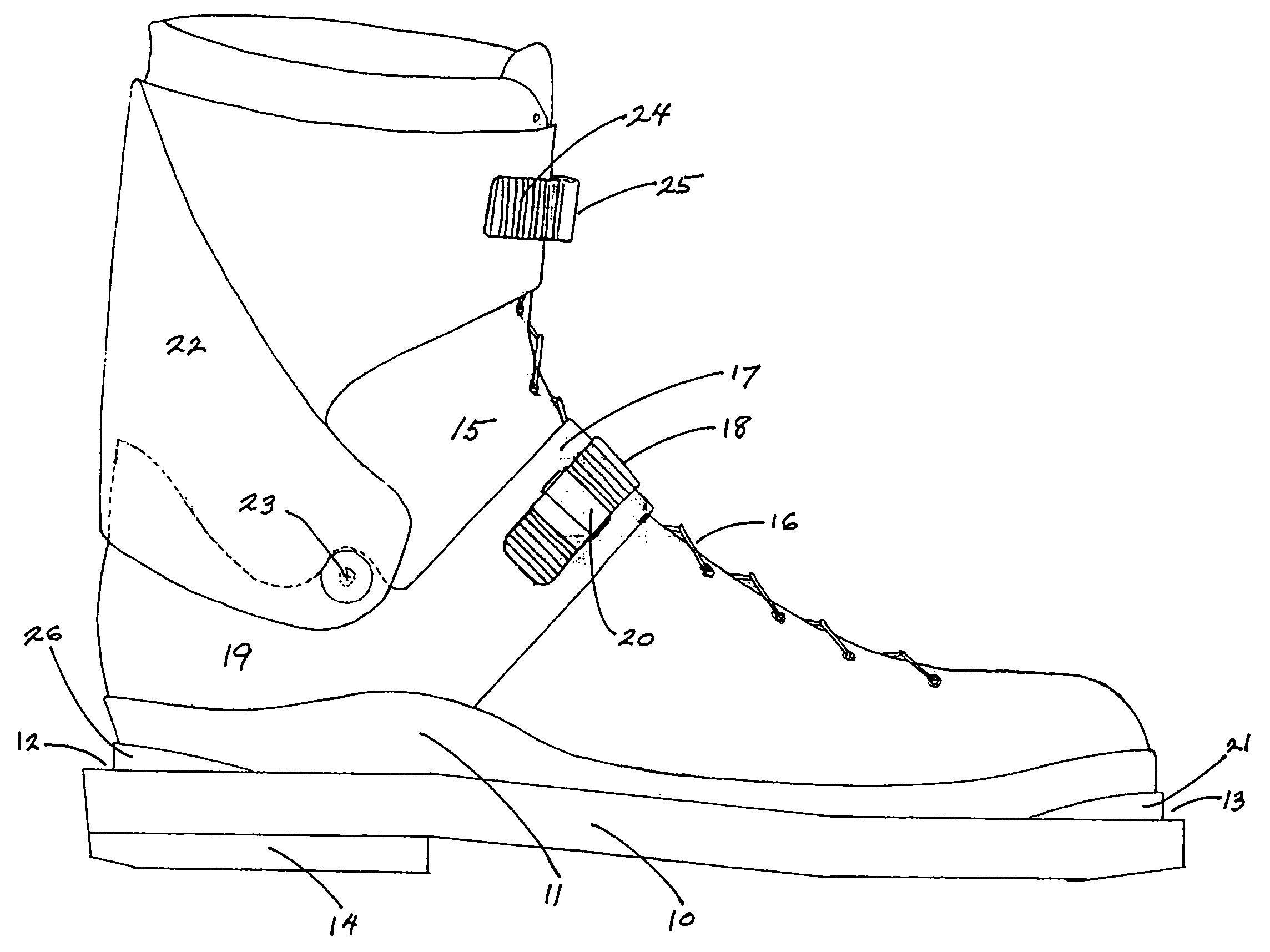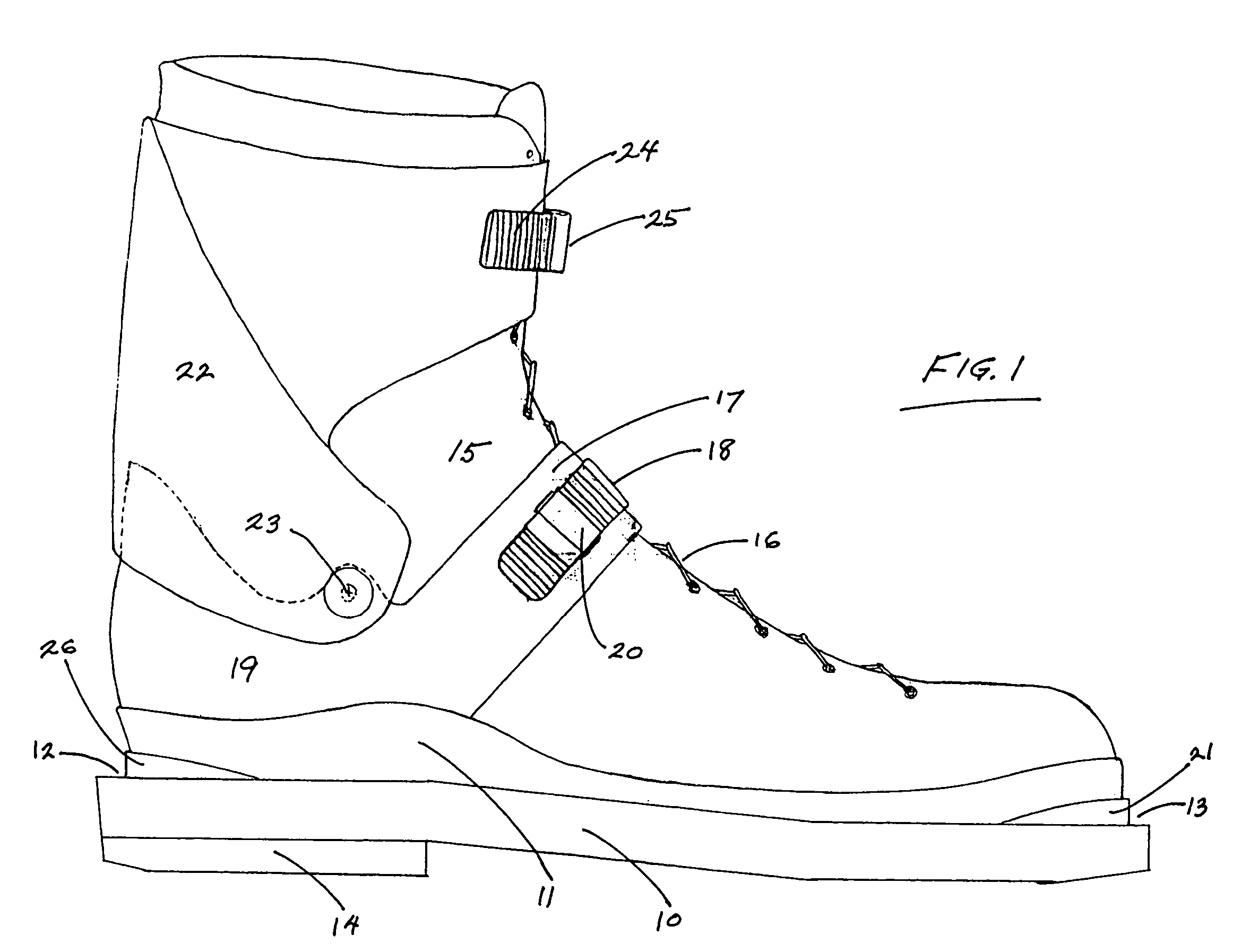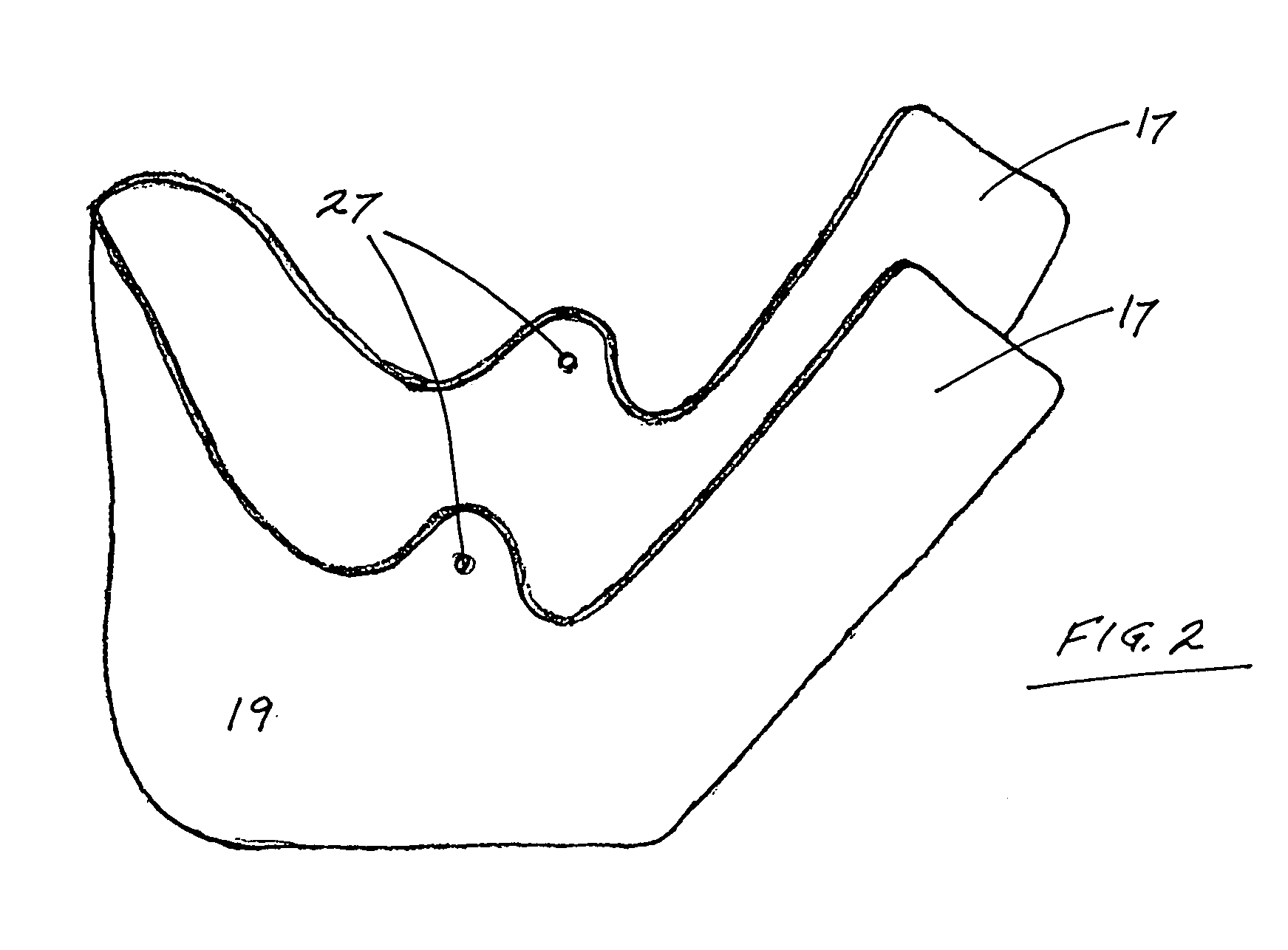Ski boot
a technology for ski boots and boots, applied in the field of ski boots, can solve the problems of ski boots continuing to soften, general pain in the front of the foot, and leather becoming too soft, and achieve the effects of enhancing the comfort of the boot, good lateral support, and avoiding the proximity of stiff materials
- Summary
- Abstract
- Description
- Claims
- Application Information
AI Technical Summary
Benefits of technology
Problems solved by technology
Method used
Image
Examples
Embodiment Construction
[0028]One embodiment of an alpine ski boot according to the present invention is shown in FIG. 1. Referring to FIG. 1, the ski boot has a shell-less and substantially flexible upper portion 15. The upper portion may be comprised of any appropriate flexible material, including for example leather, canvas, fabrics, flexible elastomers or plastics, or combinations of these materials. If desired, the upper portion may include layers or linings comprised of flexible materials such as fabrics of natural or synthetic fibers, canvas, rubber, neoprene, vinyl or flexible plastics. Referring also to FIG. 2, a semi-rigid plastic support piece 19 surrounds externally, on three sides, the back of the upper portion 15 in the heel region, excluding the anklebone areas. The support piece is preferably molded of a moderately flexible elastomer such as polypropylene or nylon. The support piece has a pivot point 27 on each of two sides at opposite locations below the anklebone areas and has two semi-ri...
PUM
| Property | Measurement | Unit |
|---|---|---|
| area | aaaaa | aaaaa |
| flexible | aaaaa | aaaaa |
| thick | aaaaa | aaaaa |
Abstract
Description
Claims
Application Information
 Login to View More
Login to View More - R&D
- Intellectual Property
- Life Sciences
- Materials
- Tech Scout
- Unparalleled Data Quality
- Higher Quality Content
- 60% Fewer Hallucinations
Browse by: Latest US Patents, China's latest patents, Technical Efficacy Thesaurus, Application Domain, Technology Topic, Popular Technical Reports.
© 2025 PatSnap. All rights reserved.Legal|Privacy policy|Modern Slavery Act Transparency Statement|Sitemap|About US| Contact US: help@patsnap.com



